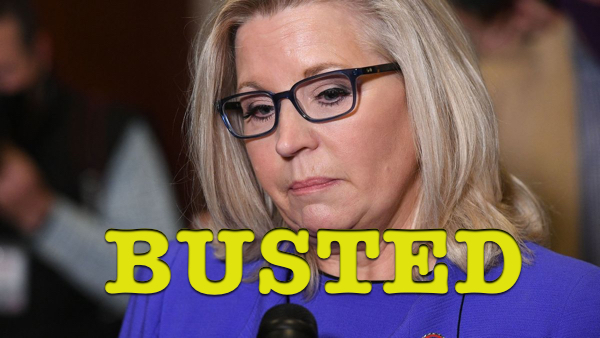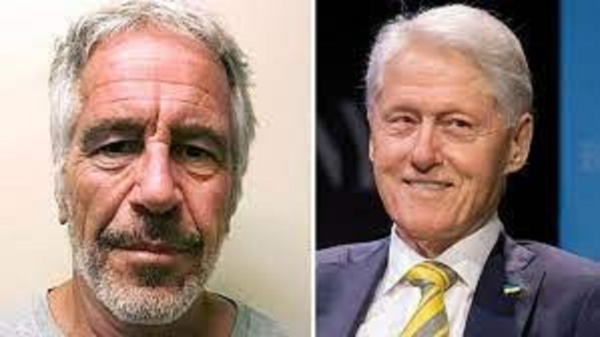keaways as House Jan. 6 Panel Subpoenas Trump //
Thursday’s unanimous vote by the House committee investigating January 2021’s Capitol riot was to subpoena former President Donald Trump.
The panel’s nine members tried to prove that Trump knew he had lost the 2020 election and that he planned to claim that he won it before the election.
The seven Democrats and two Republicans, all appointed by Nancy Pelosi (D-Calif.), held what they called a “business” meeting, rather than a hearing, less than a month prior to the Nov. 8 midterm election.
Chairman Bennie Thompson (D-Miss.) suggested that the panel meet again to discuss legislation or to refer criminal cases to the Justice Department.
Thompson stated in his opening remarks that “We are not convened today as a hearing, but as a formal business meeting of the committee to present evidence and allow us to potentially hold a vote on further investigation based on that evidence.”
Here are four key takeaways from the gathering of the House Select Committee on Investigating the January 6th Attack at the U.S. Capitol.
1. Donald John Trump: ‘Testimony under Oath’
Vice Chairwoman Liz Cheney (R-Wyo.), who will be leaving Congress in January following her defeat at a GOP primary, asked that the committee subpoena Trump.
“We are obligated seek answers directly from him who set this all up, and every American has the right to those answers,” Cheney stated before the unanimous vote.
She said, “I am proposing the resolution that the chairman issue a subpoena to relevant documents and testimony under the oath of Donald John Trump in relation to the Jan. 6 attack against the United States Capitol.”
After fighting police, a mob broke into the Capitoland moved through the offices and halls as a joint session was meeting to certify the 2020 election results. This prompted lawmakers to hide or evacuate shortly after Trump finished his remarks at the “Stop the Steal” rally near the White House.
Following Cheney’s comments, Thompson called for a voice ballot. He said that the “in the opinion” of the chair, the “yeses have it.”
Cheney then said, apparently for dramatic effect, “Mr. Chairman, I ask for a recorded vote.”
Each member voted separately to subpoena Trump this time, for a total of 9-0.
2. “Well in Advance”
Early returns for the 2020 election showed that Trump was well ahead in key battleground states. Trump declared victory in a White House speech, before millions of mail-in ballots had been counted.
Zoe Lofgren (D-Calif.), a member of the Committee, said that Trump didn’t believe he had won. She stated that evidence shows that Trump’s victory speech on election evening was planned “well in advanced” of the Nov. 3, 2020 election.
Lofgren stated that “it was a premeditated plot by the president to declare victory regardless of the actual result.” “He had a plan to remain in office before Election Day.”
Lofgren presented to the committee a memo dated October 31, 2020 from Judicial Watch President Tom Fitton. This memo was sent to Trump as a draft statement for him to use on election night. Lofgren stated that Trump had consulted Fitton, one his “outside advisors.”
Fitton memo suggested that the words “We had an electoral process today–and I won.” The Election Day deadline was met with the count of ballots. This shows that the American people have bestowed upon me the great honor [as] president of United States.
Lofgren then said that Trump’s former campaign manager Brad Parscale told the committee that Trump had stated in July 2020 that he would claim he won no matter what.
Lofgren also referred to comments made by Roger Stone and Steve Bannon, former Trump advisers, who both stated before the election that Trump would assert his victory.
Lofgren stated that Roger Stone had extensive connections to two groups responsible to violently attacking the Capitol: the Oath Keepers (and the Proud Boys) in addition to his connection with President Trump.”
The committee showed Stone speaking to a Danish documentarian before and after 2020.
“Let’s hope we’re having a good time. It’ll be, and I have every reason to believe it. The key thing to do when that happens is to claim victory,” Stone said Nov. 1, two days prior to the election. “Possession equals nine-tenths the law.”
Another clip showed Stone saying, one day before the election, “I stated, ‘f–- the voting, let’s get to the violence.'”
3. ‘He Knows He Lost’
The committee also tried convincing Trump that he didn’t believe the 2020 election was fraudulent, but that he knew that he lost.
“At times, President Trump admits the reality of losing,” Rep. Adam Kinzinger (R-Ill.) said. “He claimed publicly that he won the election, but he privately admitted that Joe Biden would be his president.”
The committee then showed a clip in which the Chairman of the Joint Chiefs General Mark Milley said to the investigators: “We are in the Oval [Office], there’s a discussion going on. The president said something to the effect that “Yeah, it was lost, let that matter go to the next guy,” referring to President Biden.
The committee then showed video footage of Alyssa Farah, former White House aide, telling investigators: “I popped in the Oval [Office] just like to give the president headlines and to see how he was doing and he was looking up at the TV and said, “Can you believe that I lost to this effing man?”
The committee also heard audio of Trump’s postelection call to Georgia Secretary Brad Raffensperger.
The committee then saw a clip of Cassidy Hutchinson, a former White House aide, telling the committee about a conversation that she had with Mark Meadows, White House chief-of-staff.
Hutchinson referred to Trump. “I can remember looking at Mark and saying, Mark, he cannot possibly think we are going in this direction, like, that call wasn’t crazy,” Hutchinson said. “He looked at me and began shaking his head, and then he said, “No, Cassidy. He knows it’s over.” He knows he lost. We will keep trying. There are still many good options, and we will continue to try.
4. RNC Chair on “Fake Electors”
“Another important part of the president’s effort was a scheme assemble fake electors in order to cast false electoral votes, states President Trump lost,” Rep. Stephanie Murphy (D-Fla.), a member of the committee, stated. “This was done with the president’s knowledge, but also with his direct involvement.”
Murphy then presented video footage of Ronna McDaniel (chairwoman of the Republican National Committee), testifying before the committee. McDaniel stated that Trump spoke to her about the plan with John Eastman, one of his lawyers.
McDaniel stated that he received the call from President Trump when he called him back. “He introduced me to John Eastman, a gentleman.”
She stated that Trump handed the call to Eastman. Eastman, she said, “proceeded” to discuss the importance of RNC helping the campaign to gather these contingent electors in the event any of the ongoing legal challenges changed the result [in] any state.”
These “contingent” electoral lists were sent to the National Archives and Records Administration as well as the Capitol, she stated, to be counted at the joint session of Congress on January 6, 2021.
Do you have a comment about this article? To sound off, please email [email protected] and we’ll consider publishing your edited remarks in our regular “We Hear You” feature. Include the article’s URL or headline, as well as your name, town, and/or state.
The post 4 Takeaways As House Jan. 6 Panel Subpoenas Trump originally appeared on The Daily Signal.









